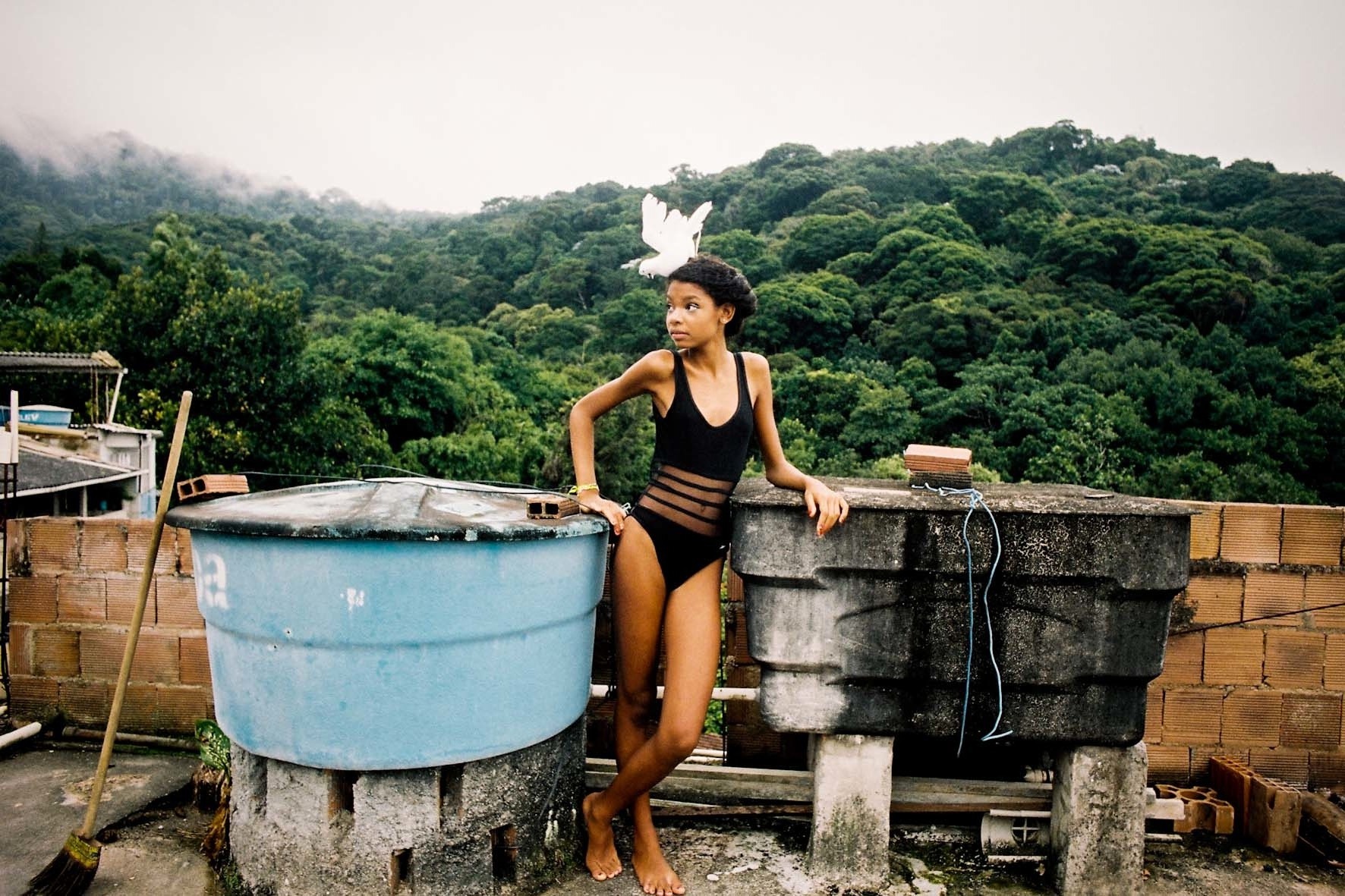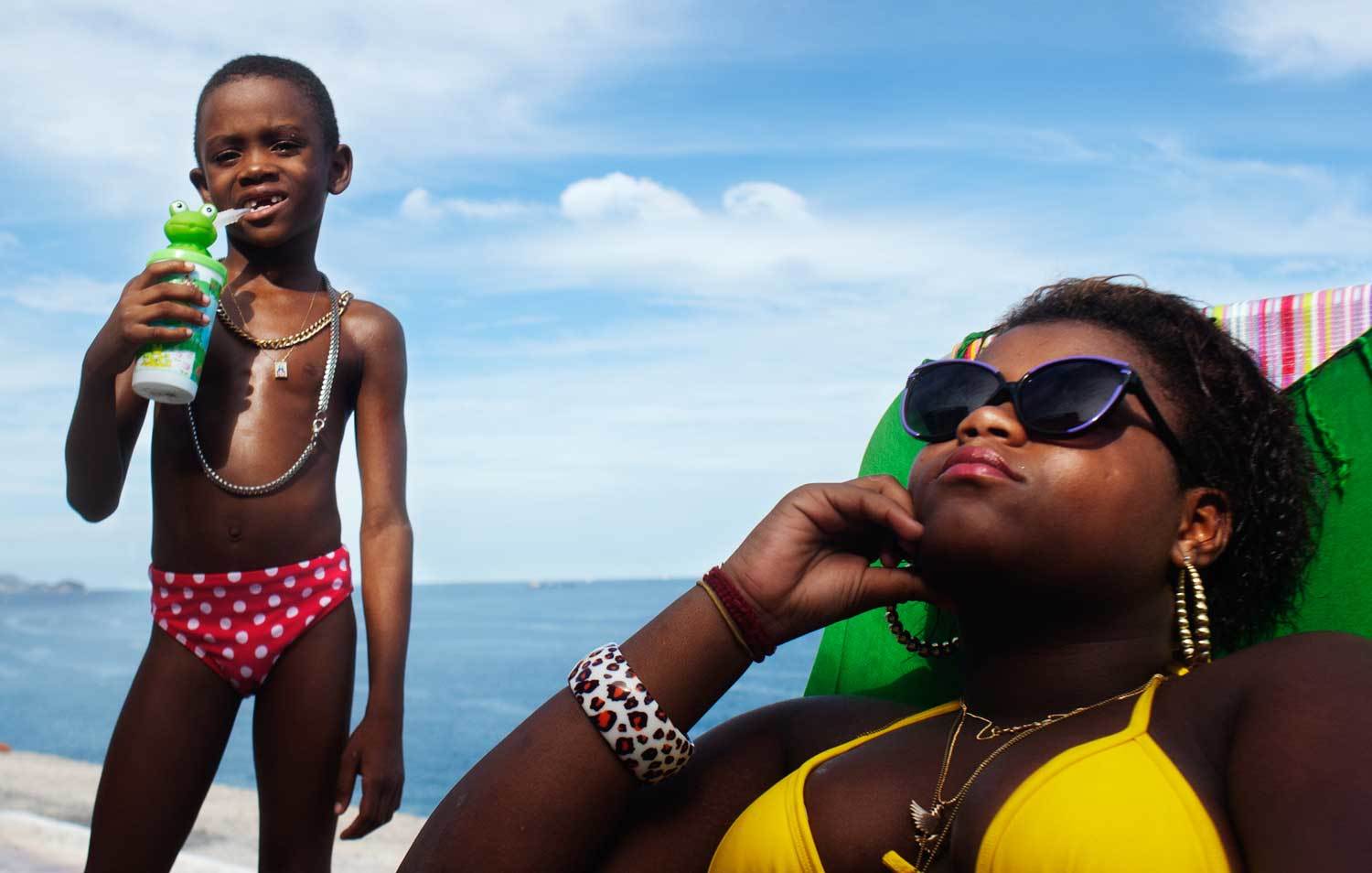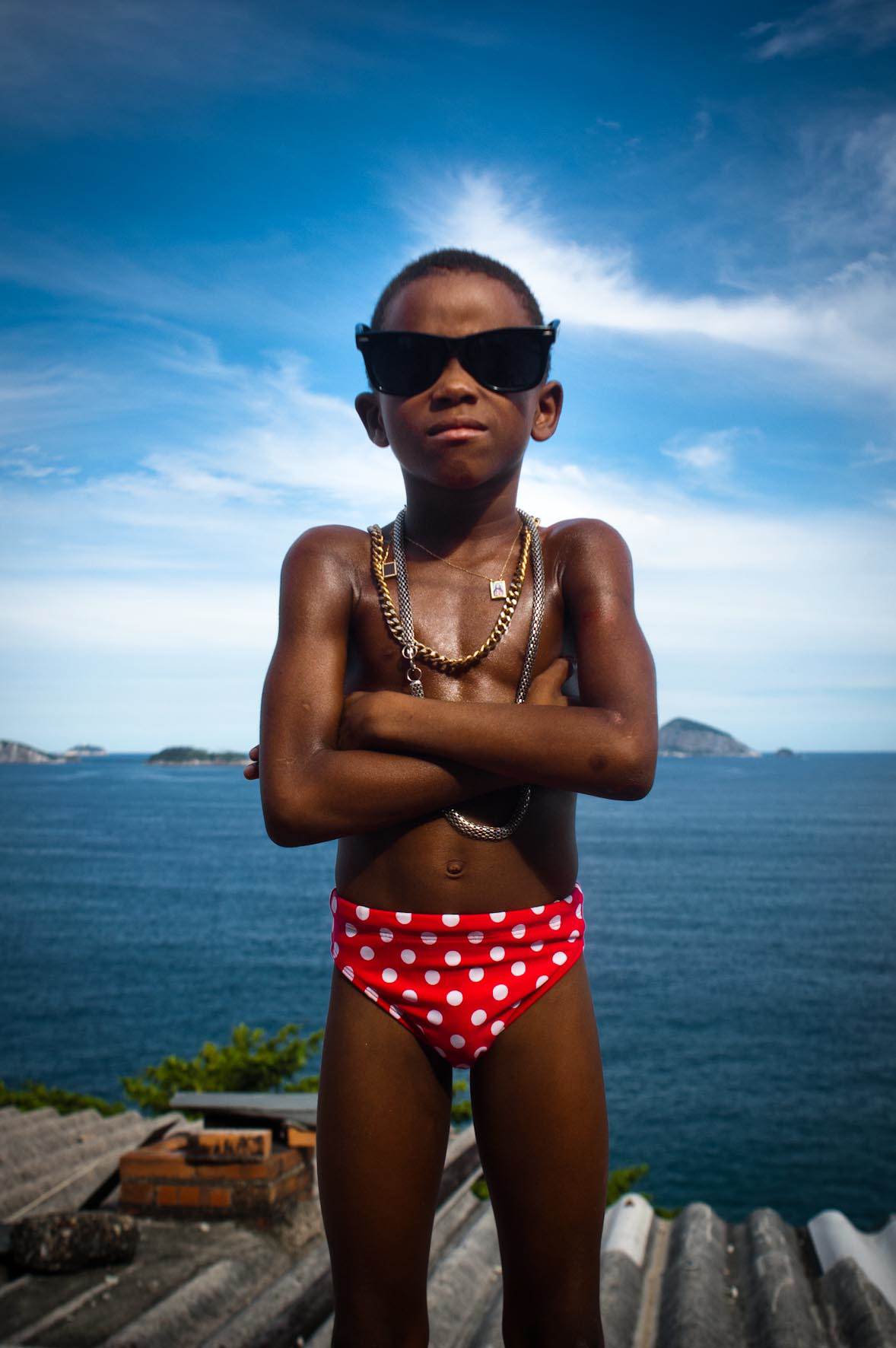French photographer Iris Della Roca’s portraits of the kids she met when living and working in Rio de Janeiro’s Rocinha favela show them in their dream futures: as movie stars, models, magicians and big bosses. The project, As the king is not humble, may the humble be king opens up at The Little Black Gallery in London this week. We caught up with Iris to get the stories behind the images.
What made you decide to move from Paris to Rio?
I had family there, and I’d always felt very attracted to Rio: the mix of the city and the surrounding nature, this strong energy seduced me when I placed my first steps there!
How and why did you end up settling into a favela there?
It was by accident. I first stayed with my friend in their house in Ipanema and after three months I met an amazing family through another friend, who were renting a room in this small favela with views of the sea. It was magical, so I decided to move there! I found it more more pleasant in the favela, like a small village. You get to know your neighbors and see them all the time, the kids living nearby became my friends and very quickly I found that I knew everyone.

Is Rocinha now an improved favela? Some favelas are becoming more established parts of the city.
Yes it is. The police work inside the favela and it’s become an official place to live, where the inhabitants can own the deeds to their properties and slowly the whole place is changing. This doesn’t mean that the problems have been solved, but the face of the favela is changing as it has become a more expensive to live in and the prices of products such as food and amenities have also been raised.
Who are the children in the photos?
They are all kids that went to the NGO that I was working at, living amongst the 70,000 inhabitants of Rocinha. They go to school in the morning, so they’re free in the afternoon, but their parents work all day so the purpose of the NGO is to offer artistic activities to them so they don’t spend their afternoons by themselves doing nothing. They all have different lives – some were living in conditions of poverty and others not; some were very protected by their family and others not.
Can you describe some of their characters to us?
They all have their own unique personality, and the pictures are a kind of exaggerated form of who they are; behind the image that most people have of the poor favela kid, there is someone that is just waiting to show up. For example, there’s a picture of a boss. I’ve known this little boy for six years now and I wasn’t surprised at all when he said to me that he wanted to appear as a boss in his picture, because he’s often telling everyone what to do and makes all of the decisions for his group of friends! Meanwhile, the girl in the picture dressed as a diva sings day and night – she looks at herself 1000 times a day in the mirror and she doesn’t leave her house if she’s not totally made-up!

Can you tell us about World Wide Women project? How did you get involved and what is it trying to do?
World Wide Women is a collection of female artists, mainly photographers, who work all over the world but whose artwork is joined thematically – encouraging female empowerment and supporting femininity. Through group shows, collaboration and supporting one another’s exhibitions, the collective intends to help nurture the practice of its 35 members – existing in an age where digital media means that artists can influence one another from the other side of the world. I met the founders of WWW and was thrilled when they presented me the idea of joining the collective.
Can you pick one photo that you think best sums up the project?
It is a difficult question, but perhaps the picture of the cinema star. You can see this young girl posing as a movie star. With the grace of her pose and the magic of this moment, she isa star! The houses behind her, the favela, the underwear hanging on a wire behind her – all of this disappears behind her, and also adds another dimension to the picture. This is the aim of the project: to enhance something that already exists but something that people do not see at first. Triumphing over their living conditions, these children change the society in which they live: once they see themselves differently, everybody does!
As the king is not humble, may the humble be king is on at The Little Black Gallery from 14th-21st March.
Credits
Text Stuart Brumfitt
Photography Iris Della Roca
